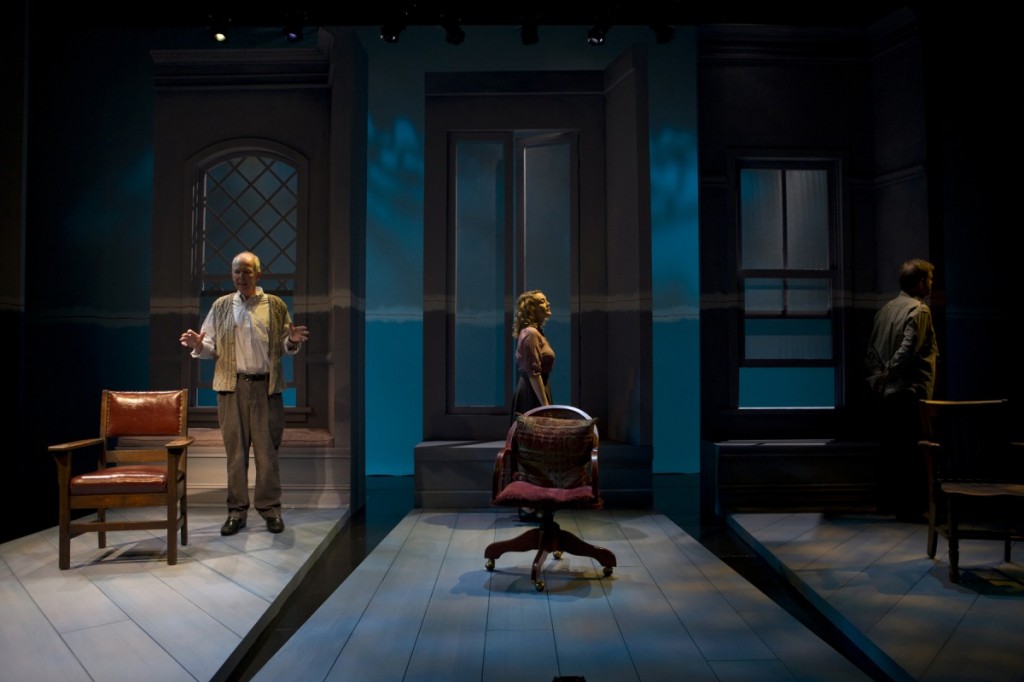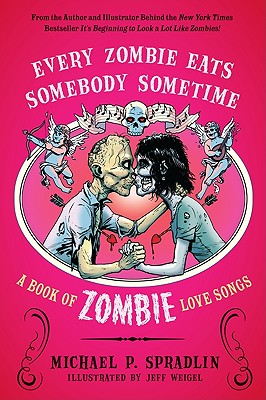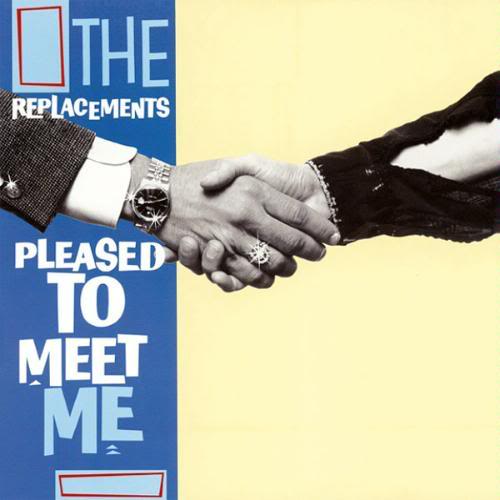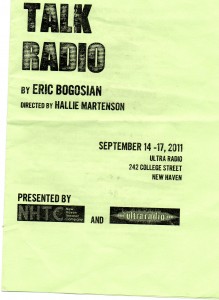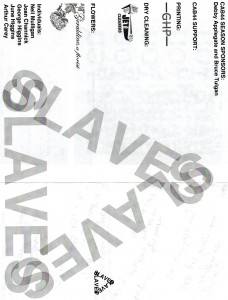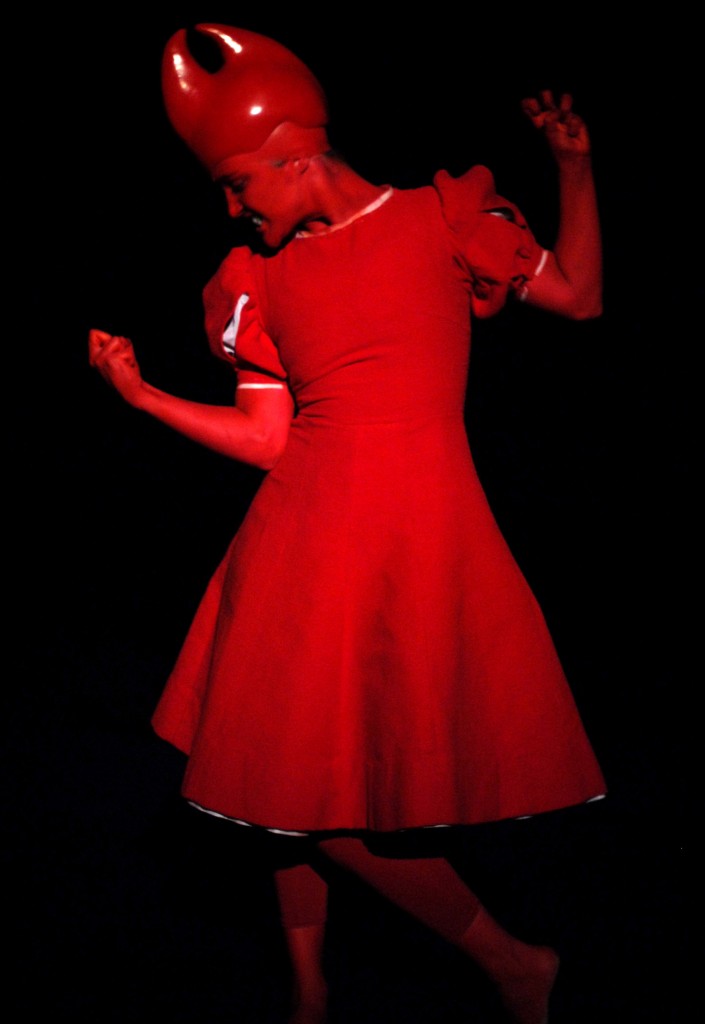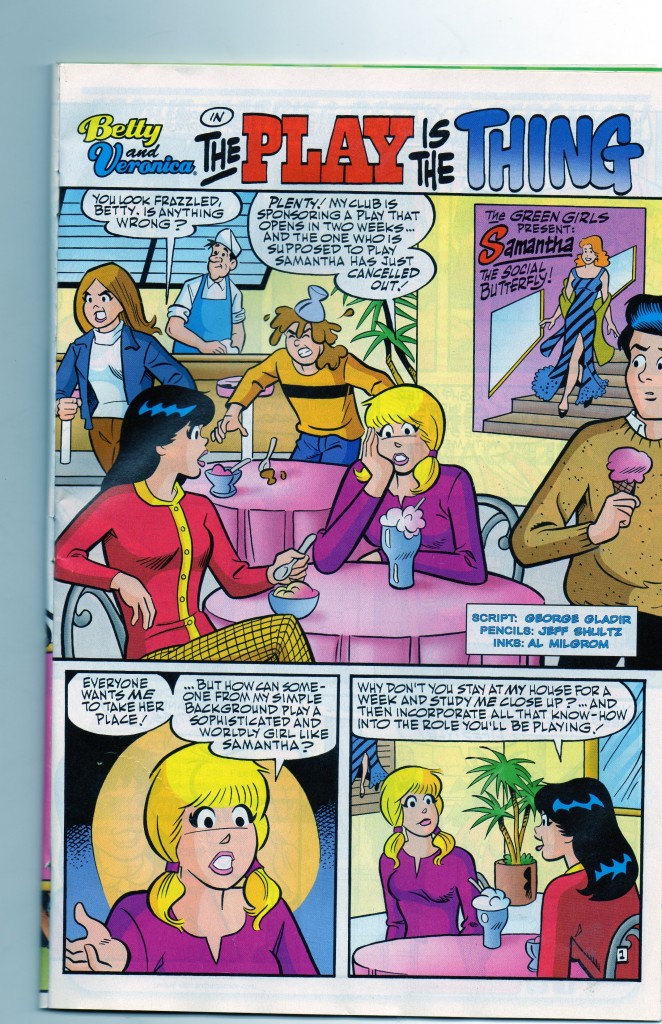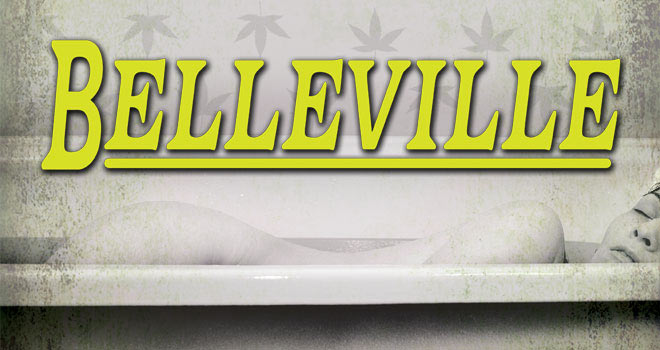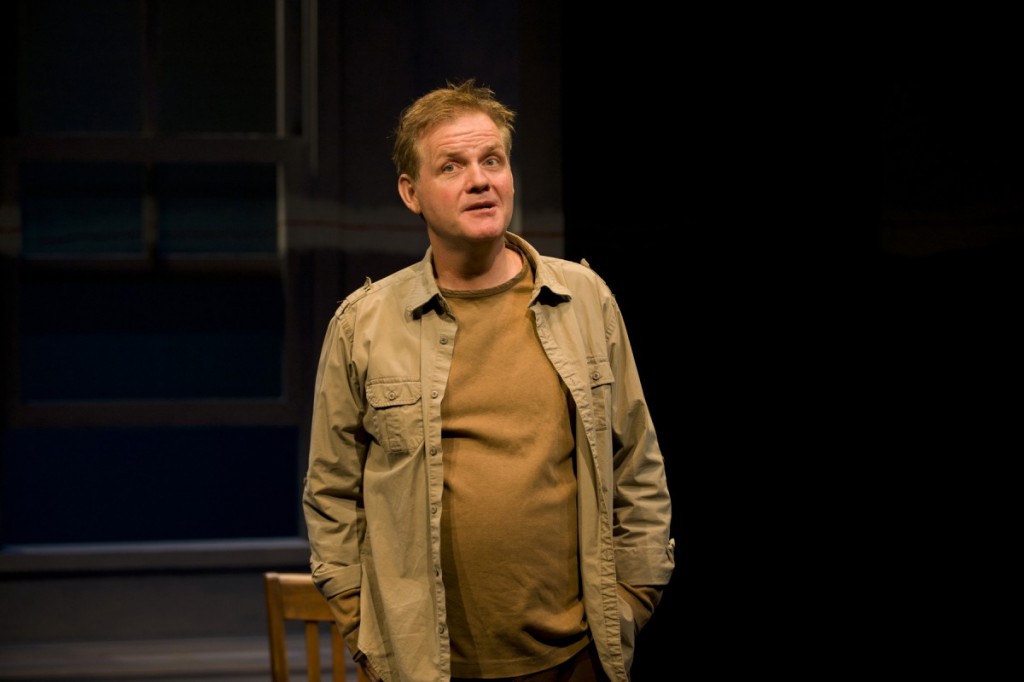
Ciaran O'Reilly in the Irish Repertory Theatre production of Brian Friel's Molly Sweeney, at the Long Wharf Theatre through Oct. 16. Photo by T. Charles Erickson.
The first show of the Long Wharf’s 2011-12 season was the last one chosen for it. Molly Sweeney wasn’t mentioned at the theater’s season-announcement event in May. Long Wharf’s artistic director Gordon Edelstein explains that while he was looking for something economical, with a small cast, to fill the remaining mainstage slot on the sched, “I can’t allow anything on my stage that I don’t believe in. I’m so sick of a lot of these one-man shows. It can be hard to find something I really believe in.”
The opportunity to bring in the Irish Repertory Theatre production of Molly Sweeney—essentially three monologues which add up to one engrossing story about a blind woman who reluctantly regains her sight—answered his prayers. “I love this play,” Edelstein says. “I’ve seen it three or four times over the years. I’m dazzled by this production.”
The deal was just finalized a couple of months ago, but moving the production was no trouble at all, says Ciaran O’Reilly, co-founder of the 23-year-old New York-based IRT company. The well-reviewed New York run just closed a few months ago. The entire cast—O’Reilly, Jonathan Hogan and Simone Kirby—were available for a remount, as was director Charlotte Moore (who happens to be married to O’Reilly). “It’s the exact same cast, the same design. The set is basically three different types of windows,” O’Reilly said in a ‘phone interview Sept. 10. We arrived in New Haven, went to the theater and did a run-through. It was one of the quickest techs in the history of Long Wharf, over in about three hours.”
Molly Sweeney began previews last Wednesday and has its press opening Sept. 21. (Expect a review on this site by the weekend.) It runs at the Long Wharf through Oct. 16.
Both the Irish Repertory Theatre and Molly Sweeney’s author, Brian Friel, have strong prior Long Wharf connections. Charlotte Moore acted in several Long Wharf productions in the 1970s and ‘80s, including the premiere of A.R. Gurney’s Love Letters, during the peak of the Arvin Brown regime. Towards the end of his tenure as artistic director, in 1994, Brown—who’d presented other Friel works over the years, such as the playwright’s adaptation of Turgenev’s Fathers and Sons—brought over an acclaimed British production of Brian Friel’s The Faith Healer, a play which had been overlooked and underappreciated when first written and staged in the late 1970s. In 2001, the Long Wharf hosted the Dublin-based Abbey Theatre production of Friel’s Translations as part of the International Festival of Arts & Ideas. Quinnipiac University’s Theater for Community program, which uses Long Wharf stages for its student productions, also did Translations there just last year.
O’Reilly says that the Irish Repertory Theatre is regularly in touch with Friel; “He’s interested in who all is doing what, and sends notes and cards.” O’Reilly says the playwright is “very happy we were coming to Long Wharf. He has great memories of his times there.”
Friel’s work runs the theatrical gamut from intimate monologues to large-ensemble literary adaptations. His biggest international hit, 1990’s Dancing at Lughnasa, has a cast of eight. Molly Sweeney’s modest trio of performers is in line structurally and stylistically with Faith Healer. “It’s a very simple story, the forerunner of Irish monologue plays,” Ciaran O’Reilly opines. “He was fascinated by the subject matter. He’d read this Oliver Sacks essay, “To See or Not to See,” and it appealed to his searching mind.” O’Reilly too has a special interest in Molly Sweeney’s tale: “My brother John is legally blind. He has severe glaucoma and has had three cornea implants.” The actor is aware of how people who are not blind can behave towards those who are. “My character is trying to make [Molly Sweeney] ‘whole,’ which I mean with big quotation marks. But blindness is not the impediment people see it as.”
Since Molly Sweeney was written in 1994, there’ve been medical advances in how vision can be restored. The script doesn’t demand a “period” production and doesn’t come off at all dated, O’Reilly says. “There are only one or two give-aways: there’s talking of ‘playing tapes,’ as in not CDs, or records for that matter; and someone says ‘He sent me a couple of pounds’—not Euros or other currency.”
Relearning the dialogue was easy, since the company had already done the hard work of mastering the emphases and repetitions which distinguish Friel’s subtly complex wordplay. “I can feel the rhythms,” O’Reilly says. “I’m from County Cavan, which is not far from Donegal,” where Friel lives. “For me with Friel, it always seems to come easily off the tongue.”
While preparing to bring Molly Sweeney to Long Wharf, the Irish Repertory Theatre was in the process of doing something new at their New York space—presenting a production they didn’t originate themselves—and a dance show at that. Noctu, an Eriu Dance Company production conceived and directed by Breandan de Gallai, plays at the IRT’s West 22nd St. homebase through Oct. 2. Irish Repertory Theatre offerings in the past have ranged from Dylan Thomas to Eugene O’Neill to Frank McGuinness to George Bernard Shaw to Charles Nelson Reilly to Oscar Wilde—all of whom have Irish blood. When the award-winning director/designer Tony Walton (himself English-born) suggested the IRT do a Noel Coward play, After the Ball, in 2005, the company initially balked, until Walton sent them a genealogical chart demonstrating, O’Reilly marvels, “that Noel Coward was more Irish than he was English!”
After the newfangled Noctu stepdances back to the old country, the Irish Repertory Theaatre is doing another Friel, Dancing at Lughnasa, which like Molly Sweeney will have Charlotte Moore directing and Ciaran O’Reilly in the cast.
Ciaran O’Reilly regularly directs IRT shows himself, but not when he’s acting in them. “I would never direct anything I’m in. It’s like that saying about the lawyer who represents himself having a fool for a client.” That’s the sort of self-awareness you need to be able to play some of Brian Friel’s self-absorbed, coercive characters—and not become them.

